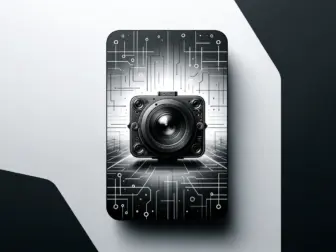Tag - Real-time Image Processing
Unlocking the Potential of Real-time Image Processing for Advanced Applications
Unlocking the Potential of Real-time Image Processing for Advanced Applications
In the era of rapid technological advancement, real-time image processing has emerged as a transformative force across various sectors, including healthcare, automotive, surveillance, and entertainment. This cutting-edge technology enables the immediate analysis and manipulation of images as they are captured, facilitating instantaneous decision-making and action. Real-time image processing leverages sophisticated algorithms and powerful computational resources to enhance, interpret, and extract valuable information from visual data in a split second.
At the heart of real-time image processing is the need for speed and efficiency. Traditional image processing techniques often involve a time lag between data acquisition and output, which can be a critical drawback in situations where immediate response is crucial. Real-time processing eliminates this delay, allowing systems to respond to visual stimuli almost as quickly as they occur. This is particularly important in applications such as autonomous driving, where the ability to instantaneously process and react to road conditions can mean the difference between safety and disaster.
The healthcare industry has also reaped the benefits of real-time image processing. During complex surgical procedures, real-time imaging allows surgeons to visualize and navigate anatomical structures with unprecedented clarity and precision. This has led to the development of minimally invasive techniques, reducing recovery times and improving patient outcomes. Additionally, real-time diagnostic imaging helps in the quick identification of medical conditions, enabling swift and accurate treatment decisions.
Another area where real-time image processing is making a significant impact is in the realm of security and surveillance. High-definition cameras equipped with real-time processing capabilities can detect and analyze movements, recognize faces, and even predict behavior, providing an enhanced level of security for public and private spaces. This technology is not only valuable for crime prevention but also for crowd management and disaster response, where immediate analysis of visual data can save lives.
In the entertainment industry, real-time image processing powers the magic behind augmented reality (AR) and virtual reality (VR) experiences. By processing images in real-time, these systems can overlay digital information onto the physical world or immerse users entirely in a virtual environment. This creates interactive and engaging experiences for gaming, education, and storytelling, pushing the boundaries of what is possible in entertainment and media.
Despite its advantages, implementing real-time image processing is not without challenges. The primary obstacle is the computational load that comes with processing vast amounts of visual data instantaneously. This requires not only powerful hardware but also optimized software algorithms that can handle the demands of real-time analysis. Consequently, there is a constant push for more efficient processing techniques and advancements in hardware capabilities, such as the development of specialized processors and the use of edge computing.
In conclusion, real-time image processing represents a monumental leap forward in how we interact with and interpret the world around us. Its applications are vast and varied, affecting industries as diverse as medicine, transportation, security, and entertainment. As technology continues to evolve, we can expect real-time image processing to become even more integrated into our daily lives, offering new possibilities and enhancing our ability to make informed decisions based on the visual data we encounter.
